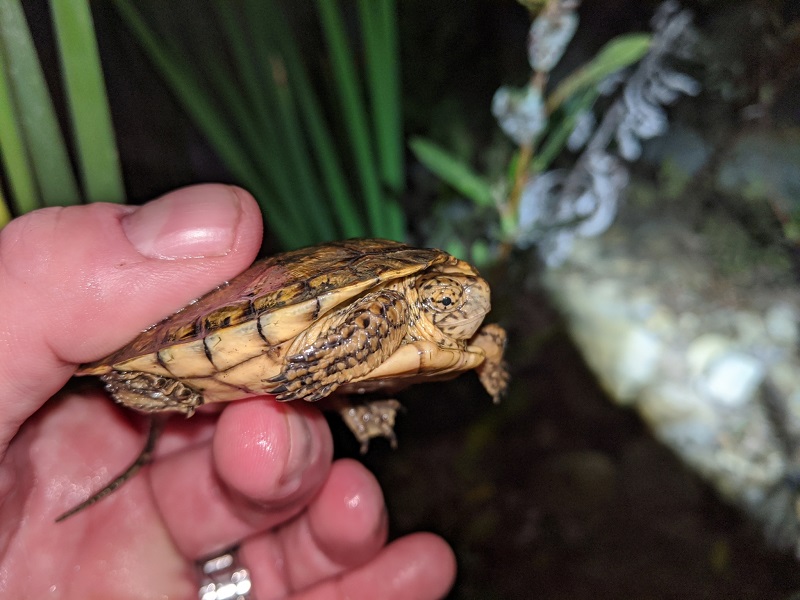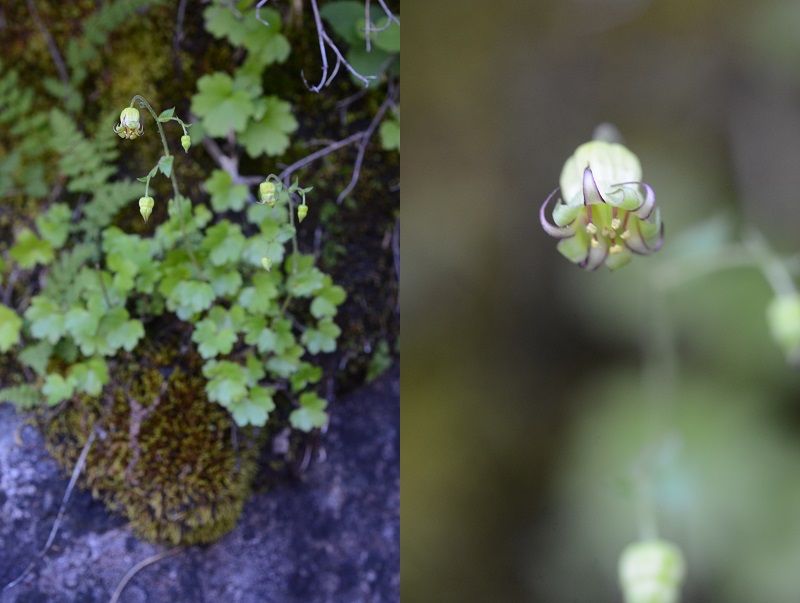
Emys marmorata – western pond turtle
Submitted by Zachary Abbey of Padre Inc.
Zachary came across some juvenile western pond turtles along Santa Monica Creek in Santa Barbara County. This turtle species is endemic to the western United States ranging from the Puget Sound lowlands in Washington to Baja California. Western pond turtles are small to medium sized with brown and green coloring and black spotted pattern on their heads and legs. They spend almost their entire lives in or close to water, but don't be alarmed if you see one roaming on land! Western pond turtles sometimes leave their aquatic habitats to search for food, habitat, or mates. During the winter months, western pond turtles hibernate underwater and breathe underwater using the process of cloacal respiration. Cloacal respiration allows these turtles to pump water through the cloaca (located at the rear of the turtle) to sacs lined with blood vessels that act like gills. There, oxygen diffuses in and carbon dioxide is released. Western pond turtle populations face many threats including historical commercial harvests, wetland drainage projects, and invasive species like the red-eared slider and bullfrog. Currently, the CNDDB has 1398 mapped occurrences. Thank you, Zachary, for submitting this observation!

Bolandra californica – Sierra bolandra
Submitted by Dana York
This inconspicuous little flower was discovered by Dana along the Sierra Nevada mountains in Mariposa County. Bolandra californica was first listed in the 1974 first edition of the CNPS Inventory of Rare and Endangered Plants as rare but not endangered and is currently considered a California Rare Plant Rank 4.3 (limited distribution in California; not very threatened in California). It is found growing in rock crevices of montane coniferous forests throughout the central Sierra Nevada mountains. The flower grows in a panicle or branching flowering structure where the lowest or outermost flowers bloom before the highest or central flowers. These flowers can be seen blooming through the summer from May to August. Thank you, Dana, for this amazing find, and for all the work you do helping all the rare and endangered plants in California!
Do you have some great photos of rare plants or wildlife detections? Submit them along with your findings through our Online Field Survey Form and see if your photos get showcased!